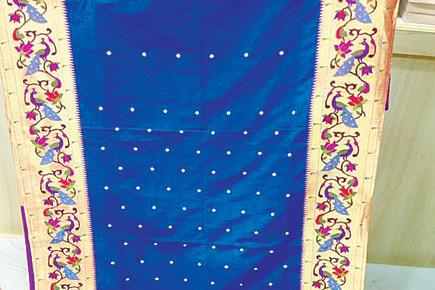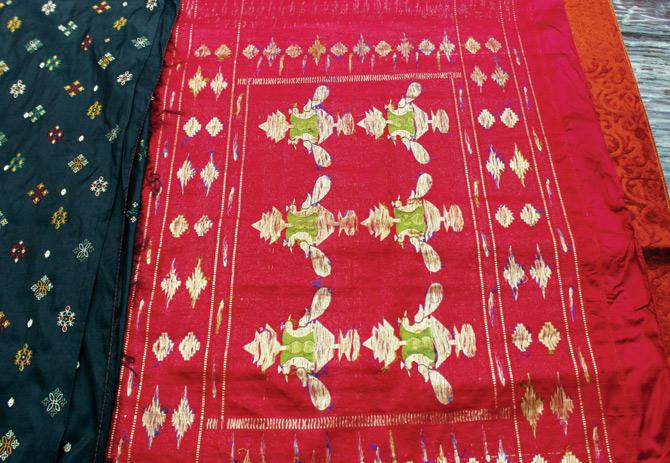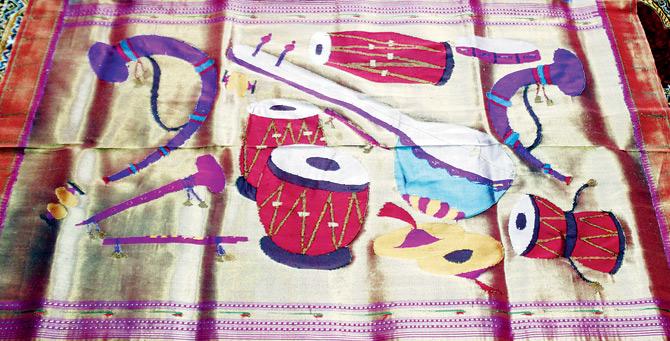The New Wave Paithani Festival aims to tell you the difference between a fake and original. Here’s a tutorial to help you make the right choice

Matka Paithani
ADVERTISEMENT
Born in the town of Paithan over 2,000 years ago, and traditionally considered the mahaawastra by Maharasthrian families; Paithani still remains a coveted item for the saree aficionados.
However, with time, it has picked quite a few doppelgangers. “An authentic handmade Paithani saree uses 200 to 350 gm of zari and 700 gm of silk and weighs between 800 and 900 gm.
 A traditional pallu adorned with the peacock motif. Pics/Tushar Satam
A traditional pallu adorned with the peacock motif. Pics/Tushar Satam
Sometimes a single saree is completed after a year-and-half,” says Sannidha Bhide, director of New Wave Paithani Festival, which will begin this weekend.

The clean, uncluttered back of an original as opposed to a fake that has uneven stitches and cut threads on the back
This is the 25th year of the festival that showcases traditional handmade paithani sarees, and the focus this time is on educating common people on how to pick an original Paithani among the fakes that have today flooded the market.
Here are four telling ways to make sure you don’t get fooled.
The Pallu
The most interesting part of the paithani is its pallu, which is usually replete with motifs of peacocks, parrots and lotus. The pallu should be flat and of even surface.

An original with similar coloured motifs on the front and inside
Uniformity in colour/patterns
The motifs on the body of a real paithani have same colour and form on the front and the inside. The weaves are visible in the same way on both sides. The silk yarn is woven in such a way that the sari gives a kaleidoscopic effect as it catches light.
The Butti
The traditional butti on the body of the real paithani should look same on both the sides. There should not be any loose threads or cut thread. The saris are known for their intricate and well-laid-out embroidery with liberal use of motifs, which have local names such as bangdi-mor (peacock in ring), poppat-maina (parrot-mynah), and huma-parinda (pheasant), among others.
The Border
The body and the border should be from the same yarn. Traditionally, a paithani sari has motifs woven on the border and pallu both. Keeping in mind affordability, revisions have been made where the motifs appear only on the pallu.
Where: Scout Hall, Scout & Guide Pavilion Hall, Veer Savarkar Marg, Shivaji Park, Dadar West
When: Oct 24 – 28, 11 am – 8 pm
Call: 38573075
Free
 Subscribe today by clicking the link and stay updated with the latest news!" Click here!
Subscribe today by clicking the link and stay updated with the latest news!" Click here!







